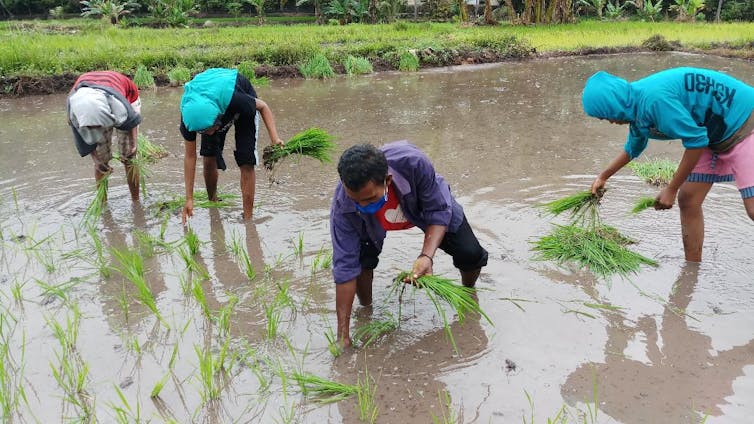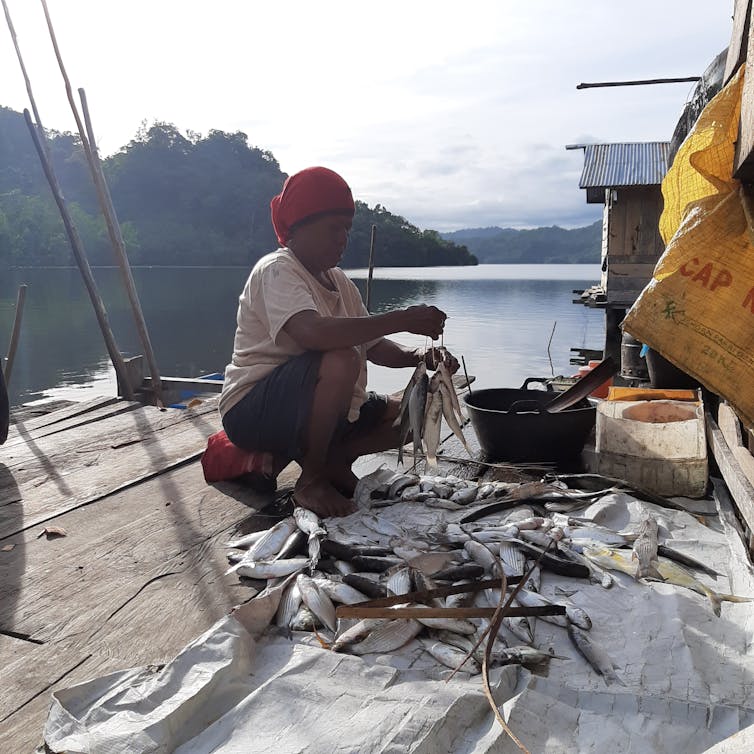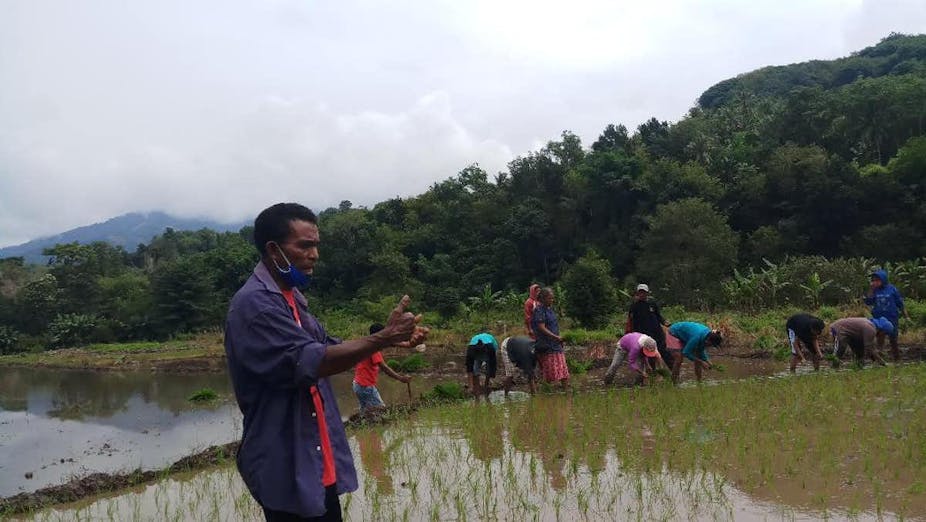Small-scale farmers and fishers are among the groups most vulnerable to climate change. Their livelihoods depend on the changing environment as they plant in fragile agricultural lands irrigated by rain.
Although small-scale farmers and fishers face challenges due to climate change, they have systems and tools to keep them resilient.
Farmers and fishers are more likely to adopt better climate change strategies if they are well connected to other farmers and fishers via organised groups.
Climate change impact on farmers and fishers
In Central America and Madagascar, climate change has caused extreme weather events and falls in crop productivity, leading to food insecurity for small farmers.
In Indonesia, several studies have predicted interannual changes in temperature and rainfall as an effect of climate change between 2010, 2030, and 2050. These changes will drastically impact rice production in Java and Bali.
In Sikka, East Nusa Tenggara — a remote region in eastern Indonesia — a 2020 survey by local nonprofit group Wahana Tani Mandiri, reported extended drought seasons, declining soil fertility and increasing plant diseases had led to bad harvests.
Farmers often delay the start of a new cycle of cultivation. The change has caused a decrease in the smallholder farmer’s income from crop production.
In Fakfak, West Papua, interviews with seven fishers by non-profit research institute Yayasan Inobu in December 2020 revealed that artisanal fishers must now go further and take longer on every fishing trip to get the same amount in the last decade.
Adaptation strategies lead to better resilience

While farmers and fishers face daunting challenges, they have strategies to help them adapt to climate change.
1. Labour reorganisation
Labour reorganisation occurs when farmers have to involve their family members in the farm’s operations. In many countries, this pattern is often used in various types of small farms or by family farmers.
This positively correlates with farmers’ ability to carry out labour-intensive tasks, such as crop diversification and soil-water conservation, which sometimes need to be done as the climate changes.
An example of soil water conservation is rotating crops to maintain soil fertility in maize-legume cropping in Ethiopia. It includes practices such as leaving last year’s crop residue behind to increase water infiltration.
There is a positive correlation between the amount of male labour in the household and the decision to choose adaptation crop diversification and soil water conservation strategies. These two strategies usually need more manpower, thus can only be applied in labour-rich households.
2. Livelihood diversification
In a semi-arid environment like Ghana, farmers who diversify their sources of income beyond farming are more resilient to climate change.
Diversifying income sources minimises the risks posed by drought, flood, erratic rainfall, or storm surges. Non-farm income can also help increase farming productivity by, for example, helping fund fertiliser purchases or a broader range of crop varieties.
Read more: Zimbabwe had a bumper harvest: what went right and what needs work
We also see diversification in East Nusa Tenggara. Interviews by Wahana Tani Mandiri revealed some cacao farmers were adding vanilla, nutmeg, and snake fruit to their crop mix.
Vanilla tolerates heat and drought well, unlike cacao. Nutmeg plants, which can grow tall, can increase shade for cacao. Snake fruit is highly adaptable and the harvested waste from this crop can become organic compost. So this kind of crop diversification brings broader benefits.
3. Indigenous knowledge

Indigenous knowledge can help manage fish stocks in the sea. In West Papua, fishers know they have to give some time for the “sea to rest” before going fishing again. The practice is called “Sasi Laut,” known as stock recovery, and has successfully been integrated into marine ecotourism management. Stock recovery could be achieved using different fisheries management such as traditional management, fishing quota, and stock enhancement.
Another powerful management tool for fisheries management in rural areas vulnerable to climate change is stock enhancement. It involves restocking, augmentation, and adding fish stocks by releasing fish for the public good (also known as restorative aquaculture).
Farmers need to strengthen their social relationships
Climate change is a global challenge farmers face in their communities, so adaptation strategies also need community involvement. One study showed strengthening social relationships among fishers in Asia, Europe, and Africa improved communal adaptation towards climate change in coastal villages.
Social networks, social trust, and social norms also affect farmers’ choice of adaptation strategies.

In East Nusa Tenggara, most farmers see farmers groups as essential to help them navigate climate variability because farmer group members help each other.
In Fakfak district, West Papua, individual approaches to restorative aquaculture have not worked well. Restorative aquaculture is likely to be more effective when farmers groups and traditional village leaders at the village level are involved.
Farmers groups are not a panacea. But combined with good access to information, capacity building of community leaders in the field, and the willingness to adopt new approaches in the face of climate change, they can increase farmers’ resiliency.


